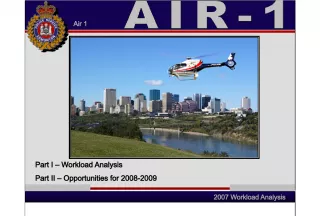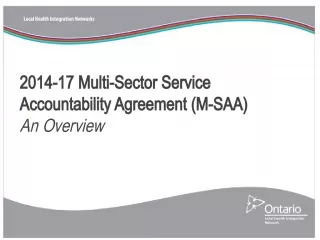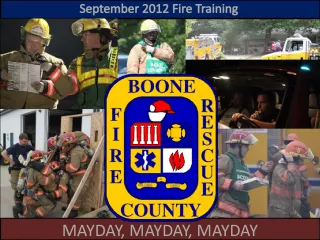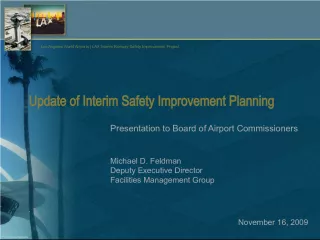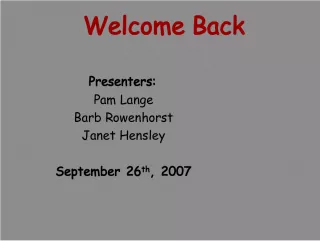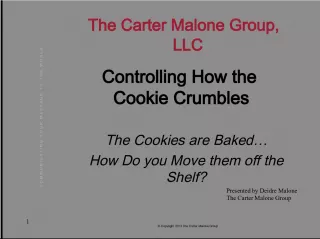The Importance of Accountability in Firefighting: Strategies for Improvement


The purpose of an accountability system in firefighting is to track the location and objectives of all personnel operating within the hazard zone, providing enhanced personal safety. Good beginnings lead
- Uploaded on | 2 Views
-
 harpercampbell
harpercampbell
About The Importance of Accountability in Firefighting: Strategies for Improvement
PowerPoint presentation about 'The Importance of Accountability in Firefighting: Strategies for Improvement'. This presentation describes the topic on The purpose of an accountability system in firefighting is to track the location and objectives of all personnel operating within the hazard zone, providing enhanced personal safety. Good beginnings lead. The key topics included in this slideshow are . Download this presentation absolutely free.
Presentation Transcript
Slide1ACCOUNTABILITYACCOUNTABILITY DMC
Slide2•The purpose of an accountability system is to track the location and objectives of all personnel operating within the hazard zone • An accountability system provides enhanced personal safety for individual firefighters • Remember- good beginnings lead to good endings Why is accountability important? Why is accountability important?
Slide3How can we get better?How can we get better? • Early accountability – Capturing the first units on scene – Firefighters must be tracked once tactical assignments have been made---not after the fact Hazard Zone Accountability Includes: 1. Staying Together 2. Always maintaining the capability to exit the hazard zone 3. Not working past any crew member’s anticipated air supply 4. Maintain crew integrity
Slide41.Arrival on Scene 2. Description of the Structure/Vehicle 3. Description of the problem 4. Assuming and Naming Command 5. Assigning a tactical channel • Fire • “E101 is on the scene of a two story duplex with a working fire on the second floor, side 3. E101 is assuming Demaret Command, all units check in on Gold upon arrival.” • MVA • “E101 is on the scene of a two vehicle, head on collision. Both vehicles are upright in the roadway with heavy front end damage. E101 is assuming 133 Command, all units check in on Gold on arrival.” Primary Size-up – Initial Radio Report Primary Size-up – Initial Radio Report
Slide5Secondary Size-up• Secondary Size-up (360) – Declare the command post location over the radio – Determine the incident strategy – Resource Determination • Fire • Offensive or Defensive • “Columbia from Demaret Command, 360 complete, we have a working fire on side 3, command post will be located at E101, we are in the offensive strategy.” • MVA • Extrication or non-extrication • “Columbia from 133 Command, secondary size-up. We have confirmed extrication with a total of 2 patients.”
Slide6How else can we get better?How else can we get better? • PAR (Personnel Accountability Report) – Intended to permit rapid determination of who may be at risk or lost during sudden changes at the scene (MAYDAY) – Tracks crews during time intervals at working fires • Situational Awareness • Maintaining crew integrity – No freelancing! – Only the Incident Commander can give you an assignment
Slide7Buffalo, NY LODDBuffalo, NY LODD FF Jonathan Croom FF Jonathan Croom Lt. Chip McCarthy Lt. Chip McCarthy August 24, 2009 • 3:51 a.m. – fire crews were sent to 1815 Genesee Street in Buffalo. When they arrived, they were met by a resident who said he heard people trapped inside. Crews began searching the building, but were eventually ordered out as conditions deteriorated. • 4:22 a.m. – Members of Rescue 1 entered the building to make sure all firefighters had evacuated the building. Less than two minutes later the floor in the rear of the building collapsed. Lt. McCarthy of Rescue 1 fell into the basement as the floor collapsed. according to the report, other members of Rescue 1 were unaware of the collapse and only reported hearing a loud noise. McCarthy began calling for help on his radio, but other members of Rescue 1 were unable to determine where the calls were coming from and left the building unaware that Lt. McCarthy was trapped. • 4:23 a.m. – Firefighter Croom entered the building after hearing the calls for help. the report says he did not exit the building, apparently falling into the basement near Lt. McCarthy. • 4:31 a.m. – An emergency head count was ordered to determine the identity of the missing firefighter. Lt. McCarthy was reported missing at that time, but FF Croom was not. Firefighters in the front of the store reported hearing a pass alarm, but could not reach it due to extreme fire conditions, a weakened floor and continuing collapse. • 4:48 a.m. – all crews were ordered out of the building because it had become unsafe. Later, concerns began to arise that FF Croom was missing. the report says he was erroneously reported in a remote area. • 5:46 a.m. – On scene personal realize FF Croom is missing and likely inside the building. • 6:10 a.m. – Another head count is taken and FF Croom is reported missing. • 9:18 a.m. – the Recovery Group reports that the two missing firefighters had been located in the basement, covered in fallen debris. • 9:32 a.m. – the debris is cleared and Recovery Group firefighters reach Lt. McCarthy and FF Croom.
Slide8What’s next?What’s next? • Incident Command Board • Two-line accountability tags • Passport system • Command Aide • Accountability Reinforcement – Truck Check IC – Training IC
Slide9•Monitors Dispatch Channel (Green) • Manager of the Command Board • Manages crews in staging • Keeps incident documentation • Captures time – Crews working time – Completed Benchmarks Command Aide Command Aide
